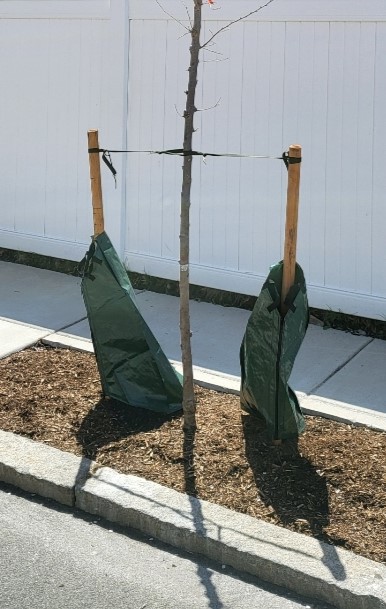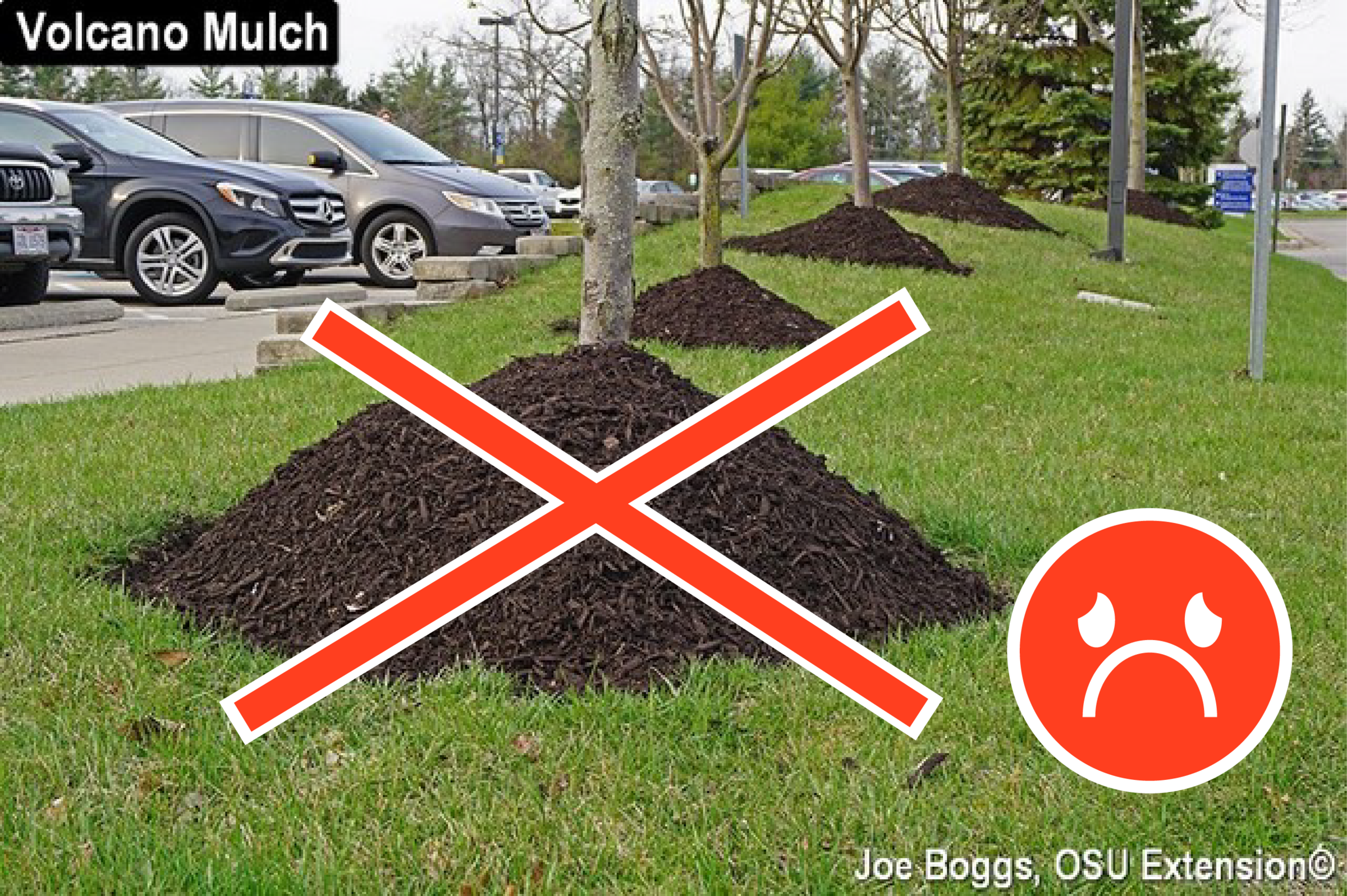Caring for Street Trees
There are three aspects of tree care to keep in mind when caring for your tree: water, mulch, and stewardship.
WATERING YOUR TREE
Watering is the most essential part of caring for trees, especially young ones.
Trees Need Different Care as They Age
NEWLY PLANTED TREES
For the first three years of life, a tree needs about 20 gallons of water a week, or 10 gallons per inch of trunk diameter. Boston’s new street trees are typically two inches in diameter.
In hot weather, a tree will need double the amount of water, about 40 gallons a week, separated into two or more waterings a few days apart.
ESTABLISHED TREES
Trees that are four years old or more have established roots, making it easier for them to access water. However, they can still benefit from watering during hot weather and drought.
WATCH OUT FOR DROUGHT STRESS
The first signs of wilting leaves appear in the afternoon, when the weather is hottest and driest, and may disappear at night. Wilting will happen to some plants with enough moisture on hot, dry days. So, wait until the morning before watering.
Leaves changing from green to red and yellow can show a lack of water.
How to Water Your Trees
Tree WITH A WATERING BAG
All trees planted by the City of Boston in recent years have been given one or two watering bags that slowly release water into the soil. If your tree has one watering bag, fill it completely twice a week. If your tree has two watering bags, fill each bag completely twice a week to keep your tree happily watered. It is best to water your tree in the early morning or late evening to ensure maximum absorption of the water.
Tree without a watering bag
If your street tree does not have a watering bag, you can run a low-pressure hose in the tree pit for twenty minutes, with the stream of water being no larger than the width of a pencil. The key to successfully watering the tree is doing it slowly, without runoff, so the water can saturate the soil as deep as possible.
IN HOT, DRY WEATHER
During the summer months, when temperatures soar and rain is only a memory, trees – especially those on the street – need extra water to survive. It is best to double the amount of water you give your tree during these times. To ensure the water soaks into the ground instead of rolling off the surface, try to space the double-watering across a few days.
how much water is too much water?
Soil that is too wet will not allow enough oxygen to reach the tree roots. Trees need soil that is moist, but not soggy. To see whether a tree needs water, make a narrow hole in the dirt away from the tree trunk with a long screwdriver. If the soil is moist six inches below the surface, the soil has enough water for the tree and does not need to be watered.
where to fill a watering bag
Our crews use a variety of watering bags when planting trees, but they have key features in common:
- There is an opening at the top of the bag, opposite the zipper.
- The opening fills the interior of the watering bag that then drains slowly over several hours.
Mulching your tree
Adding mulch or wood chips around a tree has a multitude of benefits if done with care.
Thank You Very Mulch!
You can protect your tree and help it retain water by spreading a layer of mulch around your tree. Proper mulching conserves soil moisture, moderates soil temperature, prevents weeds from growing, and reduces soil compaction. There are a few things to keep in mind when doing this:
- The mulch layer should not exceed three inches, or else oxygen will not reach the soil and the tree roots can rot.
- The mulch should form a donut around your tree, with the mulch being three inches away from the tree trunk on all sides. If the mulch is too close or touches the tree trunk, it can create an entry point for insects and disease.
- The mulch should not contain dyes. Dyes wash off mulch and contaminate the soil, harming the tree and potentially people, as the dye can seep into waterways.
- If your tree has watering bags, leave them in place and mulch around them.
This is Boston, not Pompeii – AVOID making a mulch volcano.
A mulch volcano is a large quantity of mulch piled around the trunk of a tree. Too much mulch will damage a tree in many ways, including root suffocation and rot, pest and insect infestation, and disease penetration.
Be sure to rake away old mulch before adding new mulch in order to maintain appropriate mulch depth.
STEWARDING YOUR TREE
Trees can be damaged by environmental factors; you can do your best to protect against these risks.
Key Environmental Risk Factors
ADDING MORE PLANTS
Planting small annuals, perennials, and bulbs can actually help trees, but please don’t plant any species that will grow too large. Also, never add more than two inches of soil to the pit. Adding too much soil around the tree can actually suffocate the roots.
Never plant ivy, vines, woody shrubs, or evergreens. These can interfere with the proper growth and health of street trees. If you have any questions about street trees or urban forestry issues, please feel free to contact our office at: 617-635-TREE (8733) or trees@boston.gov.
Weeds
Weeds compete with tree roots for water and nutrients, which can jeopardize the ability for the tree to grow. A great way to keep weeds and other plants from growing in the tree pit is mulching, as covered in the section above.
Soil Compaction
The more that people and pets walk on the soil surrounding the tree, the more compacted it gets. Compacted soil can't easily absorb water, making it more likely for the water to run off the tree pit into the street.
Don't Mark the Bark
Dogs love to mark trees. However, trees don't like to be marked. Pet waste can be extremely harmful to trees for three main reasons:
- Ammonium. Dog urine contains a significant amount of ammonium which seeps into the bark and burns the cambium - the layer of cells that allow the tree to grow outward. If the cambium dies, the tree cannot grow new bark.
- Pests and Disease infiltrate susceptible wounds in the tree bark left by ammonium burns.
- Salt. In addition to ammonium, dog urine contains lots of salt that, when it seeps into the soil, steals water from the tree roots. This dehydrates the tree and can impede growth if enough water is prevented from being absorbed by the tree.







